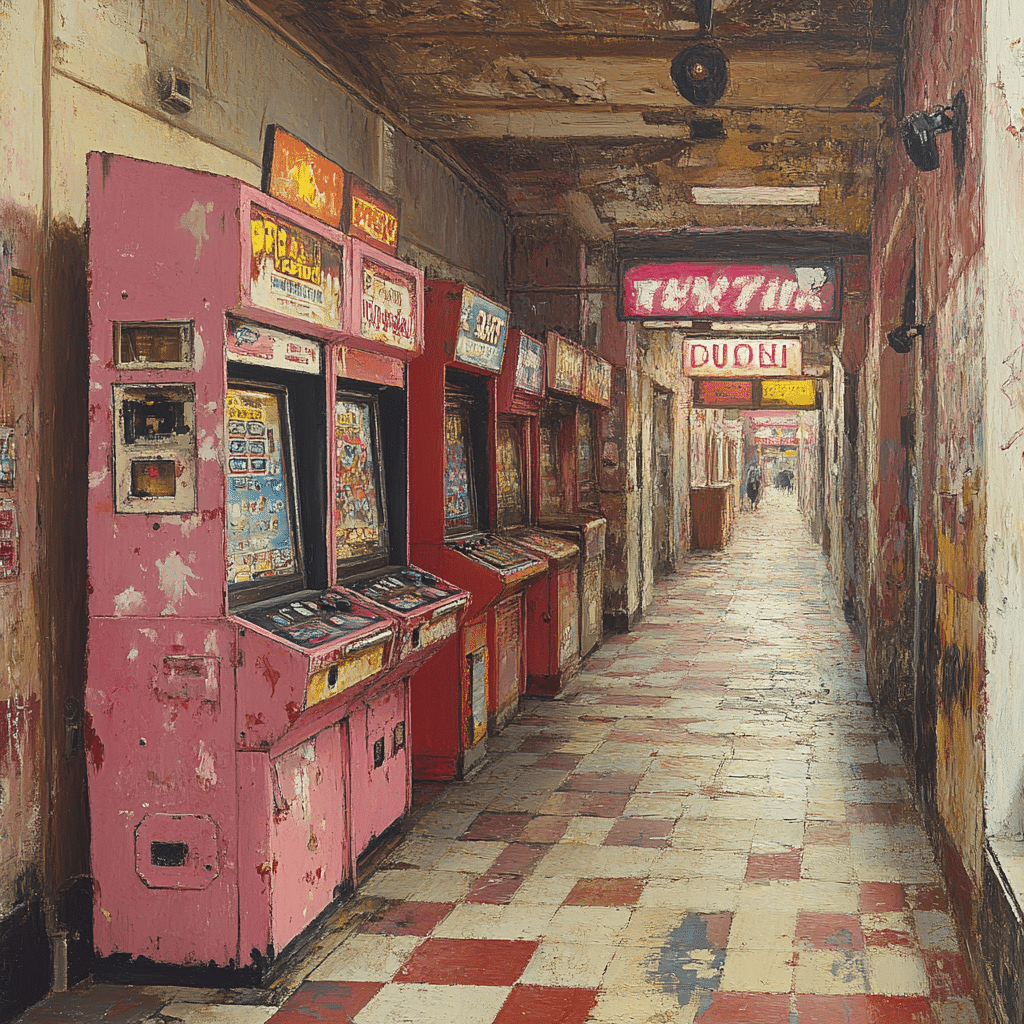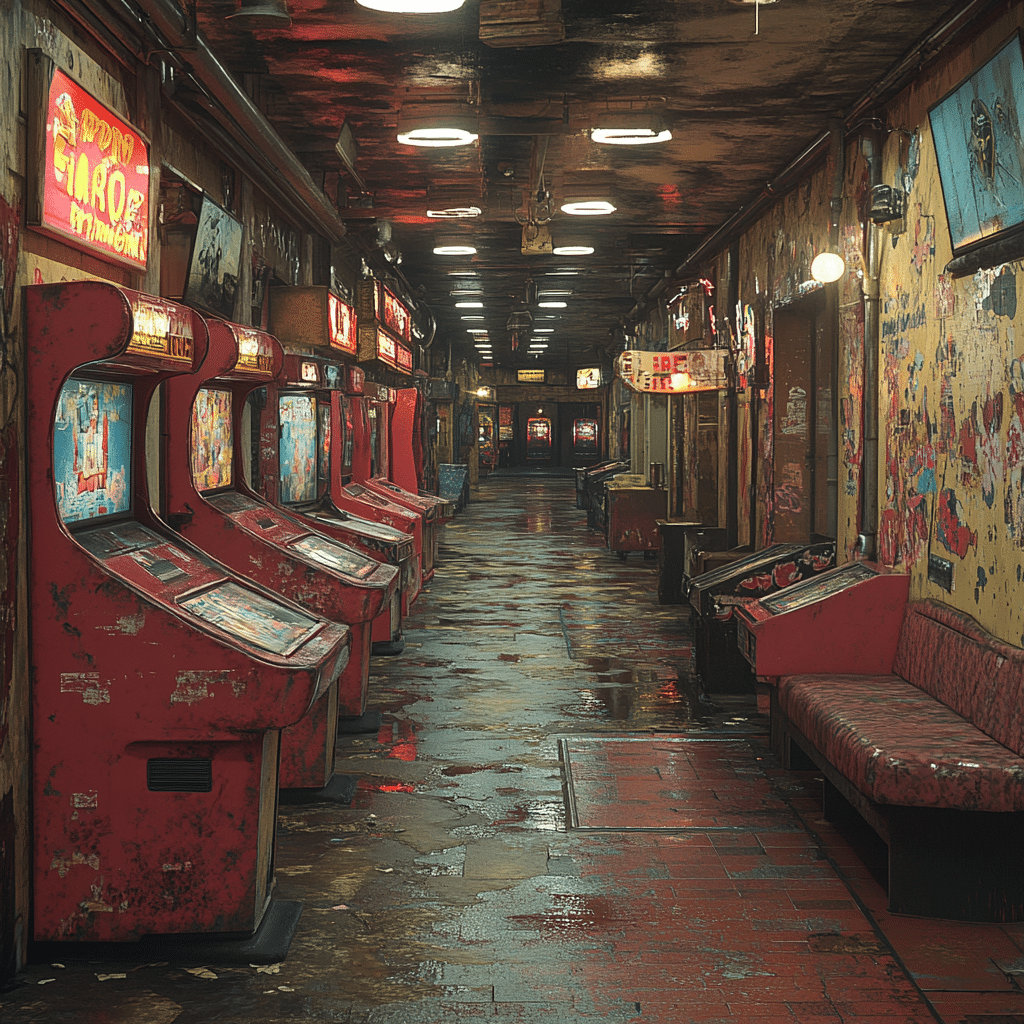
The Arcade That Transformed Gaming Forever
The arcade holds a cherished place in the storytelling of gaming, acting as a cultural milestone that reshaped interactive entertainment. With vibrant neon lights, the alluring sounds of digital sounds, and the spirited buzz of friendly competition, the arcade represented more than just a gaming venue—it ignited a seismic shift in gaming technology and community interaction. As we explore how the arcade transformed gaming forever, we’ll uncover its influential games and innovations that laid the groundwork for the future of gaming.
The Arcade: A Cultural Revolution in Gaming
The arcade isn’t just a location; it’s a phenomenon that gathered people together under the same flashing lights and shared excitement. These vibrant hubs were often adorned with rows of cabinets, each offering a unique experience that beckoned players to step inside and explore. From the early 1970s through the mid-2000s, the arcade became a melting pot for social dynamics, a spot where friendships blossomed and rivalries ignited. Concepts like high scores and skill competitions encouraged players to return showcasing an engaging aspect of gaming that remains rooted in the culture today.
As gaming technology evolved, so too did the arcade experience. The integration of innovative mechanics and multiplayer capabilities turned simple play into complex, dynamic experiences. Players weren’t just seeking to beat their own scores—they wanted to prove their dominance over others, enhancing the competitive spirit of the arcade. With countless memorable titles emerging over the years, these venues nurtured an environment rich with community excitement. The arcade became synonymous with social gaming, creating bonds that are still visible in today’s gaming culture.
Echoing throughout time, the legacy of the arcade persists in modern gaming spaces. Whether it’s the rise of esports tournaments or the social hubs like The Yard House that pair food and gaming, the core principles of social engagement and rivalry thrive. These environments continue to captivate the imaginations of gamers and casual players alike. The arcade shaped a future where gaming is celebrated as a communal activity rather than a solitary escape, striking a balance that echoes in every match played today.

7 Iconic Games and Innovations That Shaped The Arcade Experience
The simplicity of Atari’s Pong served as the launchpad for competitive gaming and is still revered to this day. As one of the first arcade games, its two-player format instigated a passion for rivalry among players. More than mere entertainment, Pong introduced the concept of high scores, inviting players to return repeatedly, hungry to beat previous records and show off their skills.
Space Invaders was a game-changer that propelled arcade gaming into mainstream culture. With its continuously increasing difficulty, it laid the groundwork for cooperative play and the establishment of leaderboard tables. Suddenly, gamers weren’t just competing against machines; they began engaging with one another, fostering a competitive environment that emphasized skill development.
Arguably the most famous arcade game, Pac-Man transcended typical gaming narratives by welcoming a diverse audience. It invited women and all age groups into arcades—a space often dominated by male players. With its approachable mechanics, Pac-Man leaned into making gaming accessible, promoting an inclusive environment that resonated with gamers and non-gamers alike.
Introducing a depth in character selection and combat mechanics, Street Fighter II laid the groundwork for video game tournaments, an early entry into what we now recognize as esports. The competitive landscape introduced a system where tournaments filled venues with enthusiastic spectators and players alike. This ran parallel to the emergence of a global community centered around competitive gaming.
Dance Dance Revolution (DDR) redefined gaming by incorporating physical movement into the gameplay narrative. Unlike traditional video games, DDR encouraged players to step away from the sedentary experience, involving rhythm and physical engagement. This innovative design attracted a broader audience—those craving activity intertwined with gaming that altered the landscape for future arcade improvements.
Often celebrated for intricate gameplay, Galaga pushed players to hone their reflexes and strategize effectively. This innovation raised expectations for players, offering layers of complexity and, in doing so, elevated the gaming experience. As players juggled numerous attacking enemies, Galaga merged skill and thought, setting a new benchmark for future games.
The modern arcade has found new life with venues like The Yard House, which integrate dining with gaming experiences. Here, traditional arcade games coalesce with a full restaurant environment, re-energizing interest in gaming. By inviting families and casual gamers into the fold, this blend strengthens the social basis of arcades, ensuring their relevance in a rapidly changing entertainment landscape.
The Lasting Impact of The Arcade on Modern Gaming Culture
The enduring influence of the arcade stretches well beyond momentary titles or mechanical innovations. These bustling environments were breeding grounds for creativity and collaboration, laying down foundations for both home consoles and online gaming experiences. They influenced how multiplayer mechanics evolved, leading to co-op gameplay as a staple of modern systems.
While digital gaming and mobile apps might suggest a shift toward solitary play, the essence of the arcade—community engagement and excitement—remains vibrant. Trends like VR gaming lounges and the evolution of esports hark back to the social fabric that arcades wove. These platforms carry forward the innate joy of sharing gaming experiences, propelling connection among players rather than fostering isolation.
Reflecting on this transformation, we realize that the arcade transcended being just a source of fun; it was a catalyst for profound change impacting player interaction. As we delve into a technology-driven future, the spirit of the arcade remains alive, reminding us of gaming’s true heart—connection. With its illustrious past spotlighted in modern innovations, the arcade boldly set the stage for a shared future of gaming that continues to inspire and unite.
In conclusion, the arcade’s legacy offers valuable lessons for today’s gaming culture. As the industry continues evolving, its roots remind everyone involved in gaming—be it developers, players, or enthusiasts—of the importance of community, creativity, and most importantly, the joy of connection.

The Arcade: A Cultural Phenomenon
The Rise of The Arcade
Did you know that the first arcade game, Computer Space, debuted in 1971? Initially, it struggled to find its audience but eventually paved the way for classics like Pong, which became a hit not just in gaming circles but in popular culture too. The arcade became a social hub, offering a communal atmosphere where friends gathered to compete and share tips. It wasn’t just about gaming; it was about building connections, much like the way fans discuss their favorite Kings Of Tupelo songs or the latest Arkham series installments.
Real-Life Inspirations
Arcades took inspiration from many real-world elements, including the design of classic cars like the iconic Crown Victoria. The nostalgia hits differently when you realize that many game developers were influenced by their childhood experiences, crafting arcade worlds that reflected their love of adventure, much like the thrill of a rollercoaster at Six Flags. Even the simplest games held a certain charm, bringing a sense of wonder as players battled pixelated foes reminiscent of a wild fer de lance snake in a jungle.
Memorable Moments and Modern Influence
Fast forward to today, and the legacy of the arcade is still felt everywhere. Games have influenced everything from blockbuster films to music, capturing the imagination of creatives like celebrated artists and Korn members. It’s fascinating to see how even Kelly Clarkson’s transformative journey and announcement of her weight loss through Ozempic can spark debates about body image within gamer culture, evolving public perceptions. Even professional athletes like Cameron Smith have taken to gaming as a means of relaxation, showing that the arcade experience isn’t just for kids—it’s a beloved pastime for all ages. Arcades continue to leave an indelible mark on our culture, proving they’re far more than a place to play; they’re part of a shared memory we all cherish.













